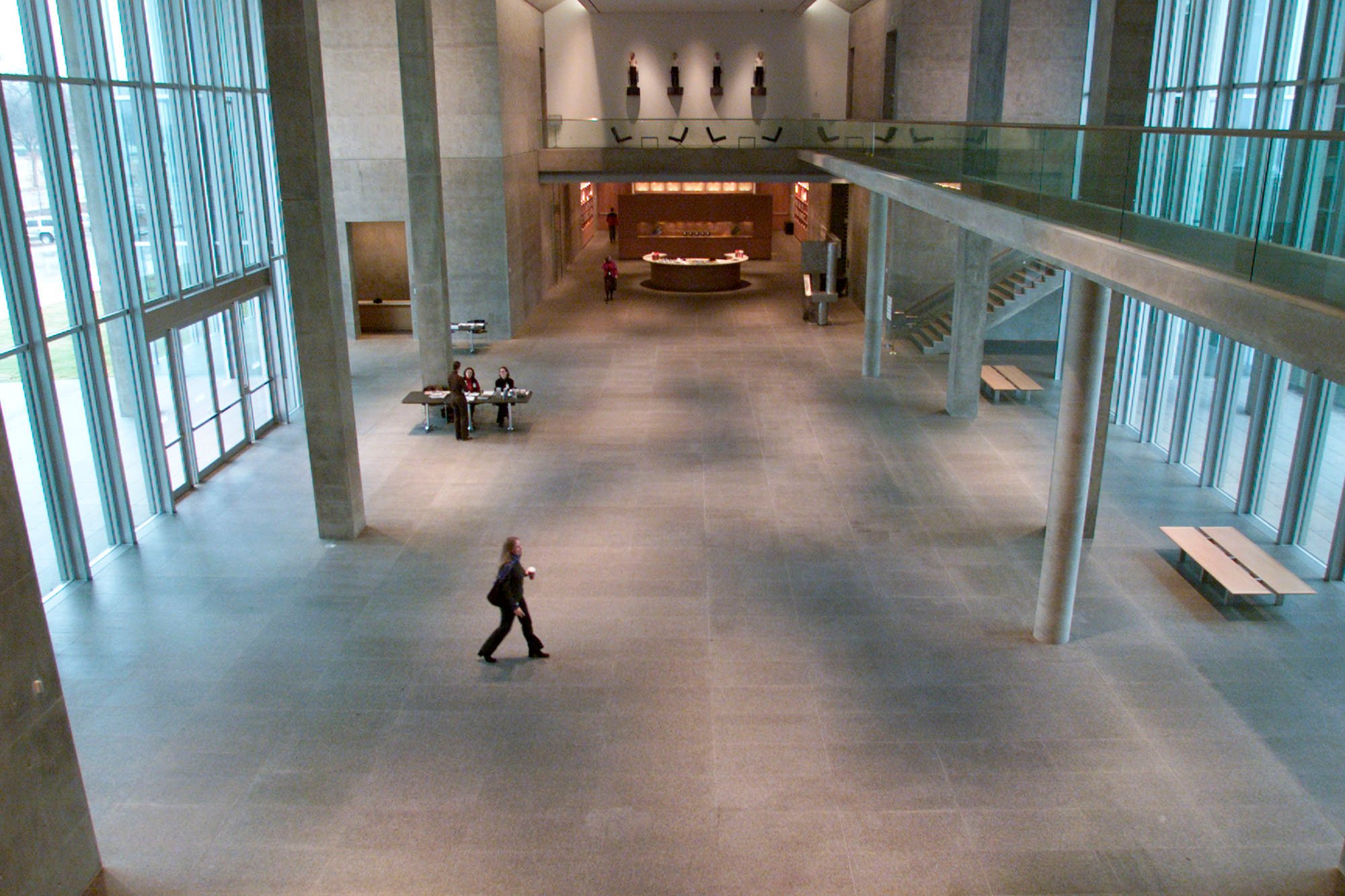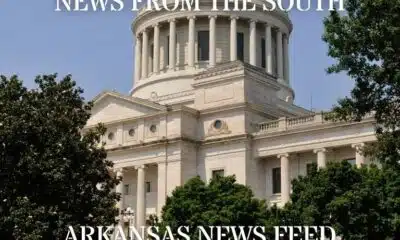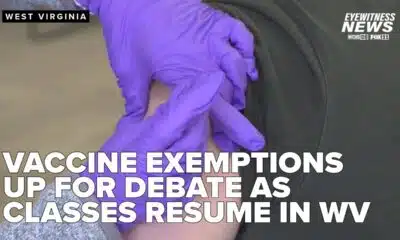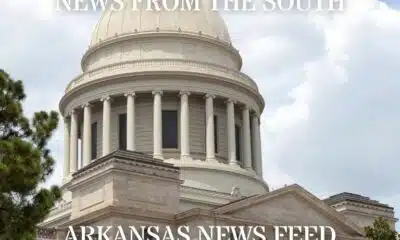News from the South - Texas News Feed
Can a Great Museum City Survive the Censorious Right?
When police removed four photographs by Sally Mann from the Modern Art Museum of Fort Worth in early January, Marshall K. Harris, a former NFL player-turned-local artist, wasn’t surprised. Local politics had been shifting to the right recently, especially since the election of conservative firebrand Tim O’Hare as Tarrant County judge in 2022. Furthermore, a nationwide cultural shift toward right-wing censorship, evident in activist book-banning efforts across Texas in the past few years, had been further invigorated since the reelection of President Donald Trump in November.
Harris wasn’t shocked either, when the photos—much-lauded and long-controversial 1980s pictures of Mann’s young children nude—were held as evidence for more than three months in what may be the most significant police investigation of a museum art show in the United States since 1990.
Instead, what amazed Harris was the silence that predominated across the Fort Worth art scene surrounding the matter.
Harris, who was a standout defensive end at Fort Worth’s Texas Christian University before his four-year NFL career, is one of few outspoken voices in an art community on edge in the face of an ascendant right-wing political force. “For an institution like the Modern to be caught in this situation, and then everybody goes silent?” he told me in February. “Everybody. You can’t talk to anyone. And I sort of wonder if me opening my big mouth puts me at risk of reaction. Nobody wants to say anything to possibly get themselves in any trouble.”
The photographs, seized by police in early January and finally returned to the museum in April after a grand jury declined to issue indictments in the case, are from Mann’s Immediate Family series, which includes both nude and clothed images of her children growing up on a remote Virginia farm. The photos removed from the Modern include a shot of the torso and genital region of Mann’s approximately 6-year-old son after eating a Popsicle that dripped down his naked body, and another wider shot of Mann’s approximately 8-year-old daughter jumping naked onto a picnic table. Mann’s three children are all now in their 40s or deceased; they were involved as adults in selecting Immediate Family nudes for inclusion in Mann’s memoir, published in 2015.
THE PHOTOS IN IMMEDIATE FAMILY HAVE DRAWN CONTROVERSY SINCE MANN FIRST SHARED THEM WITH THE PUBLIC IN 1992.
The photos were dogged by controversy in the ’90s, and they still make some viewers uncomfortable today. But they have also become part of the mainstream canon of American photography, admired by many as beacons of autobiographical art.
Mann did not respond to requests for an interview for this story. Nor did the Gagosian Gallery, which loaned the photos to the Modern. The Modern has said very little beyond noting that the works in question “have been widely published and exhibited for more than 30 years in leading cultural institutions across the country and around the world.” Other Fort Worth museums, city council members, and several artists with work in the same exhibition as Mann’s photos all ignored or declined requests for interviews. Most remarkably, city police refused to release any information pertaining to the investigation, arguing, among other reasons, that “records of alleged or suspected abuse or neglect of a child are confidential.”
As details failed to trickle out, members of the Fort Worth arts community shared gossip, looking for answers, and mostly came up empty. “I’m trying to get a better handle on it, but every single employee at the Modern has been told not to talk about this at all,” said Wesley Kirk of the nonprofit Support Fort Worth Art. “I’ve been surprised that Kimbell and Amon Carter haven’t been speaking up, because this sets a bad precedent.”
Kimbell Art Museum, Amon Carter Museum of American Art, and the Modern Art Museum of Fort Worth form a trinity of world-class, well-endowed art museums in the heart of one of the most conservative big cities in the United States. Until recently, this had not led to public confrontations.
“I’ve lived here for 40-something years, and I’ve seen all sorts of things at those museums that some people would consider inappropriate and others would not,” said Lauren Saba, proprietor of the Fort Works Art gallery. “I hope this is an isolated incident.” Saba noted that, in November 2024, her gallery ran an exhibition of provocative art called “Ban This Show”—including a video titled “God Save Abortion” by Nadya Tolokonnikova of Pussy Riot—and received no pushback.
Yet it’s difficult to consider the events at the Modern as entirely isolated. In October, Amon Carter’s exhibit “Cowboy,” which promised to “disrupt the homogenous ideal of the cowboy as a White, cisgender American male and showcase the diverse manifestations of this figure across communities,” shut down without explanation and reopened a week later with a trigger warning. The show featured images of naked men swimming together and men in cowboy getups partner-dancing and kissing.
The origin of the police-led art heist lay in a public backlash stoked by local conservative media, institutions, and politicians. Sharayah and Scott Colter, respectively the communications director and CEO for the Danbury Institute, a religious-rights group with Baptist roots, went to see the Mann photos in December at the Modern after an article in a right-wing news outlet, the Dallas Express, called the works pornographic. The Colters, upon seeing the photos for themselves, were horrified.
“It was even worse than we imagined,” said Sharayah, who splits time between Dallas and Washington, D.C. “We did not even take pictures of it, because we don’t want that kind of content on any of our devices. It’s really obscene material. It definitely does not belong in a museum. It should never have been taken in the first place. And yes, I do believe it belongs with the police.” The Danbury Institute then gathered around 20,000 signatures for an open letter invoking Biblical principles to call for the Modern to remove the Mann nudes.
Colter said she didn’t know how the Fort Worth police investigation came to be. She credited the Dallas Express—a nonprofit outlet that repurposed the name of a defunct Black-owned paper and routinely promotes the causes of its publisher, GOP megador and hotelier Monty Bennett—which published a series of alarmist articles by Carlos Turcios preceding the police investigation.
Colter also praised Bo French, leader of the Tarrant County Republican Party, and Tarrant County Judge Tim O’Hare for being early to comment on the issue. Before the police action, O’Hare told the Dallas Express that the photos “should be taken down immediately and investigated by law enforcement for any and all potential criminal violations.” In an email, French told me that Mann’s photos “could even be construed as child pornography.” He was particularly critical of text describing Mann posing her children “naked, moody, and in suggestive situations” to “evoke an edgy, dark side of childhood” that appeared on the wall at the Modern.
“That should repulse everyone except perhaps the most vile degenerates,” French said.

Some in Fort Worth see O’Hare’s hand in the investigation. Kirk said an incident like this would not have happened before O’Hare won office as county judge two years ago. Indeed, O’Hare has taken a hardline approach on far-right pet issues. During his tenure, he’s pushed to withhold funding from groups helping at-risk children over their views on LGBTQ+ issues, agitated for restrictive voting laws to benefit Republicans, and shown a draconian streak by ordering the removal of a pastor from a public meeting for speaking over his allotted time. Since his days as the young mayor of suburban Farmers Branch, complaining about undocumented immigrants to national media like CNN and pressing for “Chili’s-type restaurants” rather than more authentically Mexican establishments in town, he’s displayed a gift for knowing which issues will rally conservative support.
But a county judge is an executive position in the county government, analogous to the mayor of a city. O’Hare has no formal role in law enforcement.
It remains unclear who or what pushed the Fort Worth Police Department (FWPD) to pursue an investigation with no clear precedent among successful criminal prosecutions. Since the photos were returned, an additional baffling detail has emerged: FWPD spent $7,000 on travel to New York City to investigate “critical leads” pertaining to Mann’s photos, which are already among the best-studied and most-discussed works in U.S. contemporary art.
The photos in Immediate Family have drawn controversy since Mann first shared them with the public in 1992. A New York Times Magazine article that year questioned Mann’s fitness as a mother. A Wall Street Journal editorial went further, calling for the photos to be censored. The uproar played an important role in bringing the work to a wider audience. That exposure, in turn, attracted a stalker to Mann’s youngest daughter, causing difficulties for Mann’s family for years.
The frightening trade-offs of this sort of expression—now the sort of thing that all parents must consider in the era of social media—are enough to make many viewers queasy. “Mann’s a very controversial figure,” Saba said. “I think if you poll 10 moms, you get a half-and-half reaction.”
Mann has often been in the position of having to defend her art. Her stated impetus to make what she calls her “family pictures” was a mix of motherly adoration and deep fascination with her children’s private world, growing up on the same family farm where Mann herself had spent her childhood. “In the pictures of my children I celebrated the maternal passion their bodies inspired in me—how could I not?—and never thought of them sexually or in a sexual context,” she wrote in her 2015 memoir, a portion of which was excerpted in the New York Times Magazine.
In the memoir excerpt, Mann recounted being shocked and disoriented by the ’90s-era backlash. She was distressed when the Wall Street Journal published a portrait of her unclothed daughter with black bars censoring her nakedness—additions that Mann said “mutilated her innocence” and made the work appear scandalous. (The Dallas Express, in December, replicated the Journal’s approach when publishing Mann’s photos.)
It’s unclear how FWPD could have expected that this criminal investigation would result in conviction. The First Amendment’s protection of free expression is very broad, explained Lee Rowland, executive director of the National Coalition Against Censorship (NCAC). Two narrow exceptions are carved out for obscenity and child pornography. But Mann’s work does not qualify as either.
Under a 50-year-old ruling in Miller v. California, an expression must lack any serious artistic, literary, or scientific value to qualify as obscenity. It’s basically impossible for a work of art hung in a museum, selected by trained curators, to be seen to lack such value. “For someone of Sally Mann’s stature and longevity, the idea that her work and photography has no value does not even meet the laugh test, and it certainly doesn’t meet the test for obscenity,” Rowland said.
A separate legal test for child pornography depends on showing a child in a sexual activity or in a way intended to arouse the viewer, Rowland added. Just depicting nudity is not enough to fail this test, under U.S. code and 40-year-old precedent in New York v. Ferber.
“It’s very important that the definition of child pornography remain narrow and tethered to those realities, for the simple reason that child nudity is a completely natural and rather massive part of childhood existence, and it is widely celebrated as a cultural matter,” Rowland said, pointing to the many depictions of nude baby Jesus over the centuries. “Child nudity itself may be challenging for some people, but [it] is widely culturally accepted as a natural and non-sexual part of growing up.”
Throughout American history, police have steered clear of dictating what should and shouldn’t be allowed in museums—apart from a single incident in 1990 when employees of Cincinnati’s Contemporary Arts Center were prosecuted (and eventually acquitted) for displaying photographs by Robert Mapplethorpe, including nude adults in BDSM poses and two nude images of children.
That episode came at the peak of a previous era of culture war, which may now be on the point of breaking out anew. Then, as now, sexual identity played a shadowy role in the right’s censorious fervor: Mapplethorpe was gay, having died of AIDS a year before the exhibition. The original Dallas Express article decrying Mann’s photographs also alerted readers to photos in the Modern show depicting LGBTQ+ content, including an autobiographical video about parenthood by queer and nonbinary artist Jess Dugan.
“It’s almost like Tim O’Hare is reading a script written by Jesse Helms 30 years ago,” observed Natalie Zelt, a postdoc at the University of Texas at Austin who leads a collaborative scholarly project on the history of photography curation called “Framing the Field.” Helms was a Republican U.S. senator who used Mapplethorpe, among other controversial artists, as a wedge to change the way the National Endowment for the Arts funded artists. This summer, the Trump administration has made major cuts to the endowment’s programs, an assault on the institution not seen since Helms’ era.
The police investigation in Fort Worth may be over, but its effects could be long-lasting in the local museum and art scene. Multiple locals and experts expressed concern that the city’s museums would be more hesitant to show any work that might offend political officeholders or activists—or put board members and donors in jeopardy. Elizabeth Larison, director of the Arts & Culture Advocacy Program at NCAC, worried that such an outcome “reduces the display of art to the lowest common denominator.”
Regardless of the courage of museum officials, big-name artists may not want to or even be allowed by insurance companies to bring their expensive works to a town where an overzealous police department could seize them for extended periods on thin legal pretense. “Artists of that caliber, they’re going to look at the Fort Worth area with some skepticism,” warned Harris, the ex-NFL player. “Like, ‘Do I even want to enter into that fray?’”
On the other side of the equation, right-wing censors are emboldened and looking beyond the city limits. Rowland described a push across several GOP-controlled states, including Texas, Florida, and Oklahoma, to beef up obscenity laws. “There is a real concerted effort to change the definition to apply effectively to all images of nudity—not just children,” she said. In the Texas GOP platform for 2024, the first item on the “criminal and civil justice” agenda calls for changes to the penal code to broaden obscenity enforcement.
In the December 26 article on Mann’s photos in the Dallas Express, GOP state Representative David Lowe, who represents part of the Fort Worth area, was quoted promising legislative action this year. “It is crucial that our legal framework leaves no room for predators to misuse the realm of art to display child nudity,” he told Turcios. “Should any loopholes exist, we are prepared to address and eliminate them in the upcoming legislative session in Texas.”
In March, Lowe introduced a bill in the Texas House of Representatives which would have created a mechanism for civil penalties against museums that display “certain obscene or harmful material.” The measure never got a hearing, but, as Texas Republicans continue to push the envelope on culture-war issues, it’s easy to imagine it returning soon in some form.
In other words, what started in Fort Worth this January could soon affect museums across Texas, and perhaps eventually elsewhere in the country. Silence may not be enough to forestall it.
The post Can a Great Museum City Survive the Censorious Right? appeared first on www.texasobserver.org
Note: The following A.I. based commentary is not part of the original article, reproduced above, but is offered in the hopes that it will promote greater media literacy and critical thinking, by making any potential bias more visible to the reader –Staff Editor.
Political Bias Rating: Center-Left
This article presents a critical perspective on recent right-wing cultural and political actions in Fort Worth, Texas, especially regarding censorship and law enforcement’s involvement in the arts. The tone is largely sympathetic to the artistic community and free expression, highlighting concerns about conservative-driven censorship, referencing GOP politicians and groups pushing restrictive measures. It frames the right-wing actions as aggressive and censorious while emphasizing constitutional protections and the artistic value of controversial works. The article’s detailed critique of conservative officials, cultural policies, and the framing of the controversy reflects a center-left bias, focusing on defending artistic freedom and criticizing conservative censorship efforts without overt partisan rhetoric.
News from the South - Texas News Feed
DEA agents uncover 'torture chamber,' buried drugs and bones at Kentucky home
SUMMARY: Federal agents in London, Kentucky, investigating Scottie Shelton, discovered a disturbing “torture chamber” in a metal building on his property, complete with restraints and weapons. They found a strong odor of decay and buried drugs, including 6,000 oxycodone pills and 1,200 grams of methamphetamine. Shelton admitted to burying drugs and unintentionally forgetting their locations. Authorities also uncovered numerous unreported animal remains, including deer skulls and bobcat mounts, leading to 24 state wildlife violation counts. Shelton faces federal charges for possessing methamphetamine with intent to distribute and is held in Laurel County Detention Center under U.S. Marshal custody.
The post DEA agents uncover 'torture chamber,' buried drugs and bones at Kentucky home appeared first on www.kxan.com
News from the South - Texas News Feed
Abrego Garcia released from prison, headed to family
SUMMARY: Kilmar Abrego Garcia, wrongfully deported and imprisoned, has been released from a Tennessee jail and is en route to Maryland to reunite with his family, his lawyer Sean Hecker confirmed. Abrego Garcia was deported in March due to an “administrative error” and faced federal human smuggling charges related to a 2022 Tennessee traffic stop. His attorneys argue the prosecution is vindictive and selective, citing violations of his due process rights. A 2019 immigration ruling bars his return to El Salvador, and ICE is restricted from immediate custody post-release. The case continues amid concerns over potential re-deportation.
The post Abrego Garcia released from prison, headed to family appeared first on www.kxan.com
News from the South - Texas News Feed
Texas Senate expected to take up GOP congressional map
“Texas Senate expected to take up GOP congressional map, last stop before Abbott’s desk” was first published by The Texas Tribune, a nonprofit, nonpartisan media organization that informs Texans — and engages with them — about public policy, politics, government and statewide issues.
Sign up for The Brief, The Texas Tribune’s daily newsletter that keeps readers up to speed on the most essential Texas news.
The Texas Senate on Friday was expected to consider a new congressional map gerrymandered to maximize Republican representation, putting the plan on a path to the governor’s desk after weeks of intense partisan clashing.
Republican lawmakers were poised to push the map through over fierce Democratic opposition, launching a national redistricting war from Albany to Sacramento while positioning the GOP to net up to five additional seats in Texas.
The map, demanded by President Donald Trump to fortify the GOP’s U.S. House majority in next year’s midterm election, would hand up to five additional U.S. House seats to Republicans by dismantling Democratic bastions around Austin, Dallas and Houston, and by making two Democrat-held seats in South Texas redder. The new lines would also keep all 25 seats already held by Republicans safely red.
The pickups are meant to help the GOP hold onto its razor-thin congressional majority in a midterm election year that is expected to favor Democrats — potentially making the difference between a continued Republican trifecta in Washington, or a divided government with one chamber intent on investigating Trump and bottlenecking his agenda.
That has put Texas lawmakers at the front lines of an issue with national stakes. Republicans earned kudos from Trump for pushing the new boundaries through the state House, while Democrats won support from national party figures, including former President Barack Obama, Democratic National Committee Chair Ken Martin and U.S. House Minority Leader Hakeem Jeffries of New York.
Though congressional lines are typically redrawn once every 10 years following the decennial census, Republicans justified the aggressive and unusual move to do so in the middle of the decade by saying it was legal to craft new boundaries at any point and for purely partisan gain. They also pointed to the party’s margins of victory in 2024 and the need to counter blue-state gerrymandering to further support their push.
The U.S. Supreme Court ruled in 2019 that states can draw electoral maps on partisan grounds. But under Section 2 of the Voting Rights Act, the lines cannot diminish people’s voting power based on race.
Democrats argued that the new map would increase Republicans’ advantage by unconstitutionally suppressing the vote of Black and Latino Texans. They framed the push as a power grab by Trump meant to stack the deck in next year’s election.
Texas’ anticipated approval of the map has set off a tit-for-tat redistricting push in California, where Gov. Gavin Newsom has proposed a map voters would have to approve that could yield five new Democratic-leaning seats, effectively offsetting GOP gains in Texas. Other blue-state governors and national Democratic leaders are backing retaliatory gerrymandering as the Trump administration also pushes GOP-controlled Florida, Indiana, Missouri and Ohio to draw more red seats.
The new Texas map cleared its biggest hurdle Wednesday when, after more than eight hours of tense debate, the state House adopted the plan along party lines.
Lacking the votes to stop the map in the GOP-dominated Texas Legislature, more than 50 House Democrats staged a two-week walkout earlier this month, grinding the lower chamber to a halt by denying the quorum needed to conduct business.
Republicans unleashed an unprecedented response to drag them back to Texas, issuing civil arrest warrants, asking a court to extradite them from Illinois, seeking to declare over a dozen Democrats’ seats vacant and clamoring for legislative punishments upon their return.
After most Democratic lawmakers returned to Austin Monday, Republican Speaker Dustin Burrows, seeking to maintain a quorum, required each of them to agree to a police escort to leave the Capitol building. Rep. Nicole Collier, D-Fort Worth, refused and was confined to the Capitol for the next 54 hours, prompting a national media frenzy.
Democrats portrayed the walkout as a victory for sparking a national movement in support of retaliatory redistricting, and as just the first part of a longer fight against the map. In the House on Wednesday, Democratic lawmakers pressed their Republican colleagues on the plan’s impact on voters of color, working to establish a record they could use in a legal challenge seeking to kill the lines before next year’s election.
“This fight is far from over,” Rep. Gene Wu of Houston, chair of the House Democratic Caucus, said after the map’s passage in the lower chamber. “Our best shot is in the courts. This part of the fight is over, but it is merely the first chapter.”
More all-star speakers confirmed for The Texas Tribune Festival, Nov. 13–15! This year’s lineup just got even more exciting with the addition of State Rep. Caroline Fairly, R-Amarillo; former United States Attorney General Eric Holder; Abby Phillip, anchor of “CNN NewsNight”; Aaron Reitz, 2026 Republican candidate for Texas Attorney General; and State Rep. James Talarico, D-Austin. Get your tickets today!
TribFest 2025 is presented by JPMorganChase.
This article originally appeared in The Texas Tribune at https://www.texastribune.org/2025/08/22/texas-congressional-redistricting-map-senate-governor-desk/.
The Texas Tribune is a member-supported, nonpartisan newsroom informing and engaging Texans on state politics and policy. Learn more at texastribune.org.
The post Texas Senate expected to take up GOP congressional map appeared first on feeds.texastribune.org
Note: The following A.I. based commentary is not part of the original article, reproduced above, but is offered in the hopes that it will promote greater media literacy and critical thinking, by making any potential bias more visible to the reader –Staff Editor.
Political Bias Rating: Center-Left
The article focuses on the Texas congressional redistricting map, highlighting its Republican origins and the partisan conflict it has sparked. It provides detailed coverage of Democratic opposition and criticisms, including concerns about voter suppression among minority groups, and frames Republican efforts as a “power grab” led by Trump. The inclusion of national Democratic figures’ support for opposition and the emphasis on Democratic strategies and responses suggest a slight lean toward a Center-Left perspective. However, the article maintains a measure of balance by covering Republican justifications and legal points, which keeps it from tilting strongly left or right.
-
News from the South - Florida News Feed6 days ago
Floridians lose tens of millions to romance scams
-
News from the South - Texas News Feed6 days ago
New Texas laws go into effect as school year starts
-
News from the South - Kentucky News Feed7 days ago
AmeriCorps is under siege. What happens in the communities it serves?
-
News from the South - West Virginia News Feed6 days ago
Religious exemption debate front and center amid new school year in WV
-
News from the South - Alabama News Feed6 days ago
Final steel girders placed on new Gulf Shores bridge, completion on track
-
News from the South - Arkansas News Feed6 days ago
Trump, Zelenskyy exit White House talks hopeful about security guarantee for Ukraine
-
News from the South - Alabama News Feed6 days ago
Despite federal shift, state health officials encourage COVID vaccines for pregnant women
-
News from the South - Tennessee News Feed7 days ago
Son hopes to get emergency visa following mother's death in East Tennessee















































